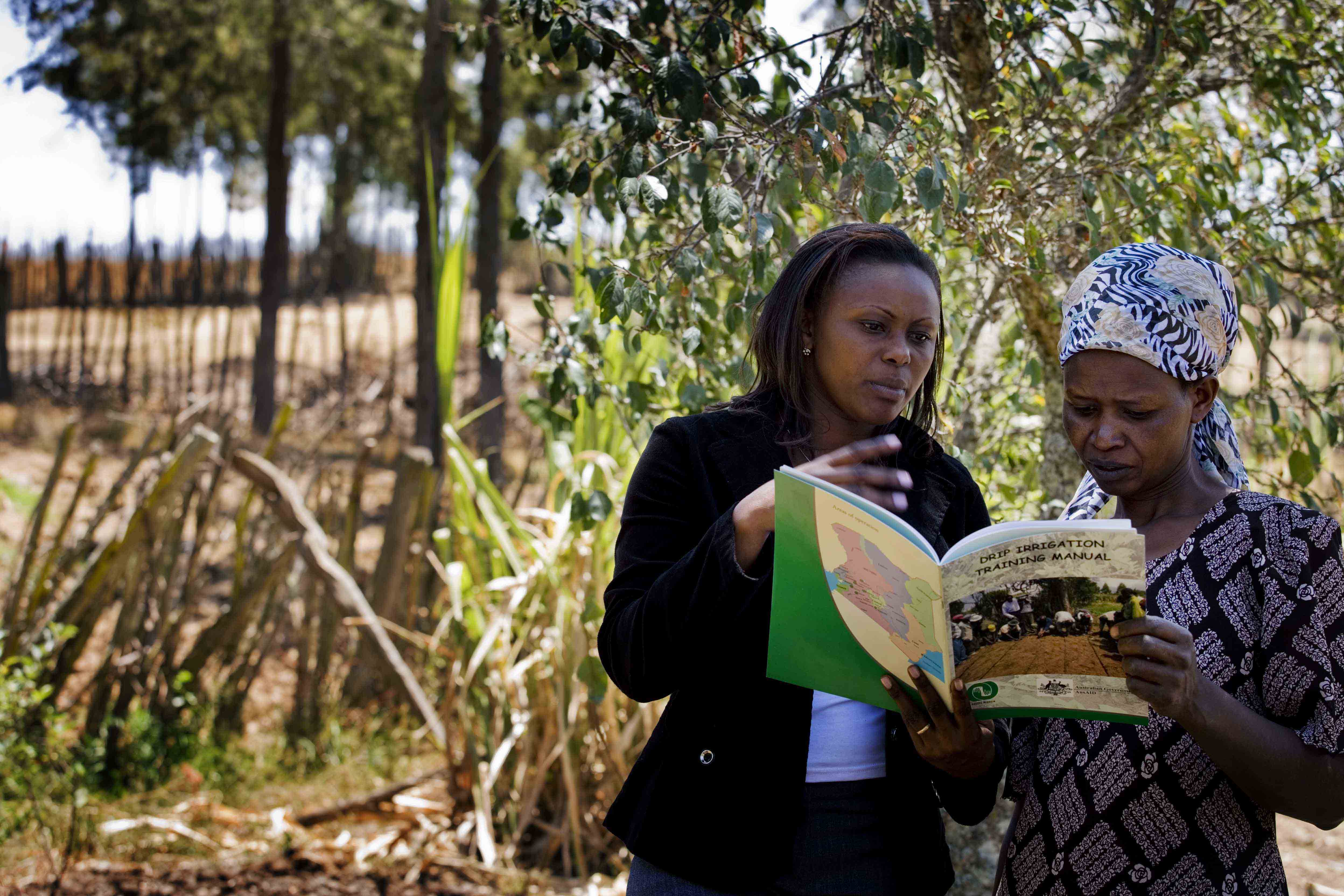Recipes for success?

What is a cookbook full of recipes – a collection of rigid instructions, or a source of guidance and inspiration? The answer depends largely on the skill, experience and confidence of the cook. Agricultural research and extension should find different means to engage with different types of ‘users’, in ways that are sensitive and attuned to the different capabilities of individual farmers and communities.
In a recent blog, my colleague Jim Sumberg considered whether agricultural technology packages are like recipes for farming, and whether agricultural research and extension systems deserve to be criticised for taking a “cookbook approach” – that is, promoting rigid recipes, even though “farmers are widely acknowledged to engage with new technology through testing, experimentation and … adaptation.” He argued that “technical recommendations … should be seen and disseminated as what they are – ideas banks, sources of inspiration, and an important source of grist for the ever-moving mill of agricultural innovation.”
Jim’s blog called to mind my own experience of using Niki Segnit’s brilliant little cookery book, The Flavour Thesaurus. The book is an instant classic because, besides being a witty and entertaining read, it helps its readers learn how to be better, more thoughtful cooks, rather than slavishly follow recipes.
The Flavour Thesaurus is not a recipe book at all in the conventional sense; rather, it is a volume of “pairings, recipes and ideas for the creative cook.” It is about how and why pairs of flavours work together, using examples from dishes and cuisines around the world.
The opening paragraph of Segnit’s introduction could be a rich source of inspiration for a study of agricultural extension — and the relationship between the craft skills of experienced practitioners and the abstract knowledge of scientific experts. She writes:
I hadn’t realised the depth of my dependence on cookery books until I noticed that my copy of Elizabeth David’s French Provincial Cooking had fingernail marks running below the recipes. Here was stark evidence of my timidity, an insistence on clinging to a set of instructions, like a handrail in the dark, when after 20 years of cooking I should surely have been well enough versed in the basics to let go and trust my instincts. Had I ever really learnt to cook? Or was I just reasonably adept at following instructions? My mother, like her mother before her, is an excellent cook, but owns only two recipe books and a scrapbook of clippings, and rarely consults even those. I began to suspect that the dozens of books I owned were both a symptom and a cause of my lack of kitchen confidence.
I like the way this short passage hints at several key insights from which analysts of agricultural research and extension might learn, including:
- the way that didactic instructions can potentially overwhelm and disempower the learner, and come to be used as a crutch instead of building indigenous skills;
- the way that indigenous skills used to be passed down between generations, whereas nowadays, formal education and literacy have created alternative channels of knowledge transfer and skills acquisition;
- the utility and importance of acquiring a basic repertoire of essential knowledge and skills, from which sophisticated performances can be constructed;
- the importance of the practitioner’s self-confidence; and
- how years of experience accumulate gradually, even imperceptibly to the practitioner, to the point when he or she has the confidence and ability to bypass the instructions, trust their own judgement, and strike out on their own.
But, there are also some subtle warnings here — for example, that a novice probably shouldn’t be too daring at the beginning; and that the problem of adhering timidly to formal instructions, on one hand, is matched on the other hand by the problem of ignoring external sources of information and sticking habitually to what you know.
For the field researcher there is also a clue here, that the visible presence of too many instructions, codes and protocols could indicate a breakdown in a system of knowledge and practice, providing evidence that could point to dysfunctions in the exercise of indigenous management skills, and disruption in the cycles of learning through practice, observation and reflection known as ‘skilling’.
Alternatively, the prominence of formal instruction may point to a system of knowledge and practice in the throes of a transition to a new and potentially more productive or sustainable agricultural paradigm.
If the presence of formal instruction – e.g. training courses, educational materials and information campaigns – remains constant or intensifies over time, these may be reliable signs of a knowledge system in a constant state of flux. In such a situation, we might ask whether we are observing a positive trajectory of continuous learning, which gradually and steadily builds the capabilities of its participants, or a system that is intrinsically unstable and unsustainably dependent on external support.
Finally, The Flavour Thesaurus reminds us that a good cookery book can be a different kind of resource for the novice (i.e. a set of instructions for learning-by-doing, drilling, and building confidence) and for the expert (i.e. a source of inspiration and general guidance, and a reference manual where technical details can be checked).
Agricultural research and extension should be able to engage differently with novices and experts, youth and older generations, and those acquiring new skills as well as those seeking to consolidate an existing repertoire of skills. Research and extension systems should be capable of supporting both new farmers undergoing a course of training, and skilful and experienced cultivators conducting their own experiments.
Written by Dominic Glover
Image credit: Kate Holt/AusAID (CC BY 2.0)
